
Muranska Planina National Park: Slovakia's Untamed Wilderness
Muranska Planina National Park: Discover Slovakia's pristine landscapes, rich biodiversity, and historical marvels in an untouched natural setting.
Muranska Planina National Park is a hidden gem in the heart of Slovakia. This park is known for its stunning landscapes, lush forests, and diverse wildlife. Visitors can explore its vast meadows, deep valleys, and rocky cliffs that offer breathtaking views. The park is a haven for nature lovers and outdoor enthusiasts who want to experience the tranquility of unspoiled nature. The park is home to various rare plant and animal species, making it a significant spot for biodiversity. Hikers can enjoy well-marked trails that lead to scenic viewpoints, ancient ruins, and mysterious caves. One of the park's highlights is the Muranska Planina Plateau, which provides panoramic views of the surrounding countryside. History buffs will appreciate the remnants of medieval castles and fortresses scattered throughout the park. The Muráň Castle, perched on a steep hill, is a must-visit. It offers a glimpse into the region's past and provides a perfect backdrop for memorable photos. Whether you're trekking through the forests, exploring caves, or simply relaxing in nature, Muranska Planina National Park promises an unforgettable experience.
Local tips in Muranska Planina National Park
- Wear sturdy hiking boots as the trails can be rocky and uneven.
- Bring a map or GPS device, as some areas of the park have limited cell phone reception.
- Visit in spring or autumn for the best weather and fewer crowds.
- Pack sufficient water and snacks, as there are limited facilities within the park.
- Look out for guided tours to learn more about the park's unique flora and fauna.
Muranska Planina National Park: Slovakia's Untamed Wilderness
Muranska Planina National Park is a hidden gem in the heart of Slovakia. This park is known for its stunning landscapes, lush forests, and diverse wildlife. Visitors can explore its vast meadows, deep valleys, and rocky cliffs that offer breathtaking views. The park is a haven for nature lovers and outdoor enthusiasts who want to experience the tranquility of unspoiled nature. The park is home to various rare plant and animal species, making it a significant spot for biodiversity. Hikers can enjoy well-marked trails that lead to scenic viewpoints, ancient ruins, and mysterious caves. One of the park's highlights is the Muranska Planina Plateau, which provides panoramic views of the surrounding countryside. History buffs will appreciate the remnants of medieval castles and fortresses scattered throughout the park. The Muráň Castle, perched on a steep hill, is a must-visit. It offers a glimpse into the region's past and provides a perfect backdrop for memorable photos. Whether you're trekking through the forests, exploring caves, or simply relaxing in nature, Muranska Planina National Park promises an unforgettable experience.
When is the best time to go to Muranska Planina National Park?
Iconic landmarks you can’t miss
Slovak Paradise National Park
Experience the breathtaking landscapes and thrilling adventures of Slovak Paradise National Park, a top destination for nature lovers and outdoor enthusiasts.

Rekreačný areál Predná hora
Discover relaxation and rejuvenation at Rekreačný areál Predná hora, a serene wellness center and restaurant in the heart of Slovakia's natural beauty.

Castle Muran
Uncover the enchanting history and stunning views at Castle Muran, a captivating ruin in the heart of Slovakia.
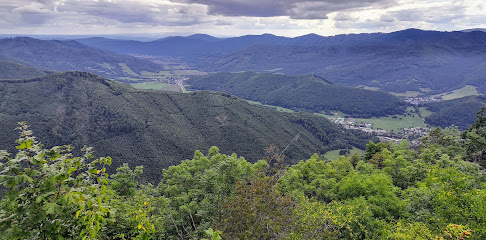
Sysľovisko.sk
Experience the perfect blend of thrill and nature at Sysľovisko, Muráň's premier amusement park, farm, and zoo destination for all ages.
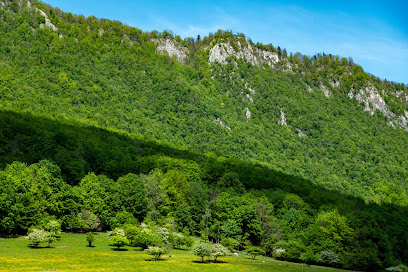
Náučný chodník Stratenský kaňon
Explore the breathtaking landscapes and rich biodiversity of Stratenský Kaňon, a must-visit destination for nature lovers in Slovakia.
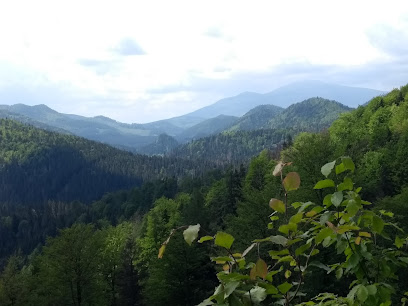
Náučný chodník Muránsky hrad
Explore the stunning Muránský Hrad Hiking Area in Slovakia, where breathtaking views and rich history meet for an unforgettable outdoor adventure.

Prameň Hrona
Discover the natural beauty of Prameň Hrona in Telgárt, a serene tourist attraction perfect for relaxation, hiking, and outdoor adventures.
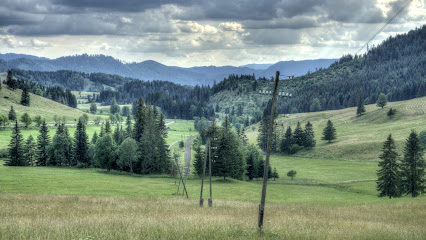
Muranska planina syslia lúka
Explore the stunning landscapes and diverse wildlife of Muranska Planina, Slovakia's breathtaking natural reserve, perfect for every outdoor enthusiast.

Banský náučný chodník v Kvetnici
Explore the Banský Náučný Chodník in Kvetnica for a perfect blend of nature and history in the heart of Poprad, Slovakia.

Čertova dolina
Explore the pristine beauty of Čertova Dolina, a nature preserve in Slovakia renowned for its stunning landscapes and diverse wildlife.

Veľká Lúka
Discover the enchanting beauty of Veľká Lúka, a captivating nature preserve in Slovakia filled with stunning landscapes and diverse wildlife.

Chata Zámok pod Muránskym hradom
Experience the serene beauty of Chata Zámok pod Muránskym hradom, where nature and history intertwine in a captivating mountain cabin retreat.

Huta Etelka
Explore Huta Etelka: A stunning historical landmark in Nižná Slaná, blending rich heritage with beautiful landscapes for an unforgettable experience.

Parkovisko - Sysľovisko Muránska planina
Discover the beauty of Muránska Planina National Park with convenient parking at Sysľovisko - your gateway to Slovakia's natural wonders.

Správa NP Muránska planina, Informačné stredisko
Experience the breathtaking beauty of NP Muránska Planina, a national reserve perfect for outdoor adventures and nature exploration in Slovakia.

Unmissable attractions to see
Jasna Low Tatras
Explore the breathtaking Jasna Low Tatras, Slovakia's premier destination for skiing, hiking, and immersive outdoor adventures year-round.
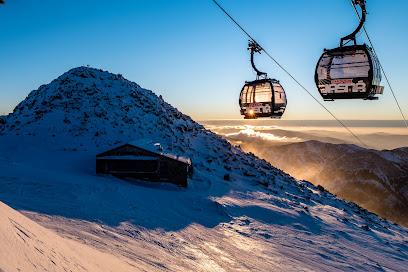
Dobšinská Ice Cave
Experience the awe-inspiring Dobšinská Ice Cave, a UNESCO World Heritage Site showcasing stunning ice formations in Slovakia's breathtaking Slovak Paradise National Park.

Castle Muran
Discover the captivating ruins of Castle Muran, a historical gem in Slovakia, offering stunning views and rich heritage for every traveler.

Minerálny prameň Tisovská Šťavica
Experience the rejuvenating mineral waters of Tisovská Šťavica, a serene escape into nature's healing embrace in Slovakia.
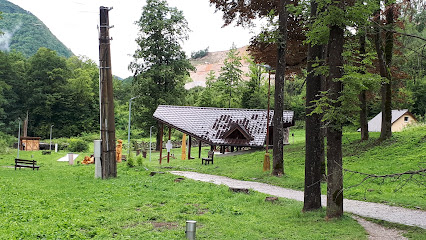
Sysľovisko.sk
Experience the perfect blend of adventure and nature at Sysľovisko, a charming amusement park, farm, and zoo in Muráň, Slovakia.

Náučný chodník Muránsky hrad
Explore the stunning Náučný chodník Muránsky hrad in Slovakia, where nature and history unite for an unforgettable hiking experience.

Prameň Hrona
Explore the enchanting Prameň Hrona in Telgárt—a serene natural spring offering breathtaking views and a tranquil escape into nature's embrace.

Muranska planina syslia lúka
Discover the breathtaking landscapes and rich biodiversity of Muránska Planina, Slovakia's hidden gem for nature lovers and adventure seekers.

Hutiansky vodopád Bobačka
Immerse yourself in nature's masterpiece at Hutiansky vodopád Bobačka, where scenic beauty and tranquility await in Muránska Huta.

Múzeum zvoncov
Explore the captivating history of bell-making at the Museum of Bells in Šumiac, Slovakia—a unique cultural experience amidst stunning landscapes.
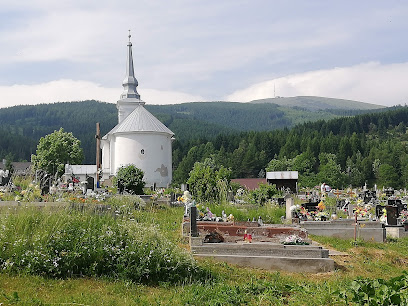
Čertov viadukt
Explore the Čertov Viadukt, a majestic historical landmark in Slovakia known for its stunning architecture and breathtaking natural views.

Veľká Lúka
Discover the serene beauty of Veľká Lúka, a nature preserve in Muráň, Slovakia, perfect for hiking, wildlife watching, and escaping into nature's embrace.

Pohorela Slightly Acid Mineral Drinking Water Spring
Explore the soothing Pohorela Slightly Acid Mineral Drinking Water Spring - a natural retreat for health and relaxation in Slovakia's scenic countryside.

Rázcestie Veľká Lúka - Piesky
Experience the tranquil beauty of Rázcestie Veľká Lučka - Piesky, a breathtaking nature preserve in Muráň, Slovakia, perfect for outdoor lovers.

Chamkova stodola
Explore Chamkova Stodola in Šumiac, a picturesque attraction celebrating Slovak culture amid breathtaking natural beauty.
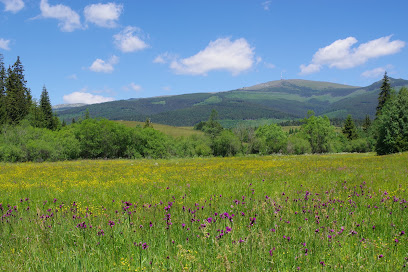
Essential places to dine
Salaš Zbojská - Zbojnícky dvor
Discover modern European flavors in Tisovec at Salaš Zbojská - Zbojnícky Dvor; where tradition meets culinary innovation.

Ranch under Ostrá Skala
Discover Ranch under Ostrá Skala: A true taste of Slovakia's culinary heritage amidst stunning natural beauty.

Kúria na Táloch
Experience authentic Slovak cuisine at Kúria na Táloch—where tradition meets breathtaking nature in Brezno.

Rekreačný areál Predná hora
Discover culinary delights and wellness bliss at Rekreačný areál Predná hora in Muráň - where nature meets relaxation.

Castle Muran
Explore Castle Muran: A breathtaking ruin offering stunning views and rich history in the heart of Slovakia.

Chata pod Kráľovou Hoľou
Discover authentic Slovak cuisine at Chata pod Kráľovou Hoľou, nestled in stunning mountain scenery for an unforgettable dining experience.

Reštaurácia Elf
Experience authentic Slovak cuisine at Reštaurácia Elf in Brezno – where every meal tells a story.

Koliba pod Kráľovou hoľou Telgárt
Experience authentic Slovak cuisine at Koliba pod Kráľovou hoľou in Telgárt - where tradition meets stunning mountain views.

HOREHRONSKÁ KÚRIA - REKREAČNÝ DOM - PIZZA - REŠTAURÁCIA
Experience the delightful fusion of rustic charm and exquisite flavors at Horehronská Kúria - your ultimate dining destination in Telgárt.

Polomka, Bučník
Experience authentic Slovak cuisine in the heart of Polomka, Bučník with warm hospitality and delightful flavors.

Mamut Revúca
Experience local flavors at Mamut Revúca - your go-to brewpub for delicious pizzas and craft beers in Slovakia.

Reštaurácia Salmo
Discover authentic Slovak cuisine with modern flair at Reštaurácia Salmo in Brezno-Bujakovo.

Tálska Bašta
Experience exquisite Slovak cuisine at Tálska Bašta in Bystrá - where tradition meets modernity in a stunning setting.

Penzión u Sysľa
Discover authentic Slovak cuisine at Penzión u Sysľa in Muráň – where tradition meets comfort in every bite.

Tavern Psota
Discover authentic Slovak cuisine at Tavern Psota in Revúcka Lehota – where every meal is a journey through local flavors.
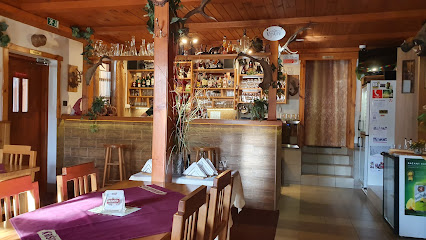
Markets, malls and hidden boutiques
Muránske buchty
Indulge in the sweet flavors of Muránske Buchty, a charming bakery in Muráň, famous for its delectable pastries and warm hospitality.

Krčmička u Falťanov - Zbojská
Experience authentic Slovakian flavors at Krčmička u Falťanov, a charming bakery in Pohronská Polhora, renowned for delicious pastries and warm atmosphere.
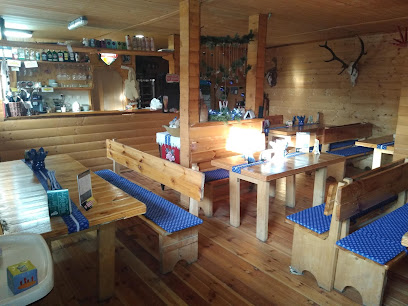
Legendárne buchty - ZBOJSKÁ
Experience the authentic taste of Slovakia with delightful pastries and a cozy pub atmosphere at Legendárne buchty - ZBOJSKÁ.

Coop Jednota
Explore the heart of Muráň at Coop Jednota, your one-stop supermarket for local flavors and essentials in Slovakia.

Potraviny Gazda
Explore Potraviny Gazda, a gourmet grocery store in Muráň, Slovakia, offering exquisite local and international delicacies for food lovers.

Tradičná zmrzlina
Experience the authentic taste of Slovakian ice cream at Tradičná zmrzlina in Muráň – a local favorite for delicious flavors and a charming atmosphere.

CSM Market
Explore CSM Market in Tisovec for fresh local produce and a taste of authentic Slovak culture.

TikiTaka.sk
Explore TikiTaka.sk in Tisovec for the finest selection of sportswear and gear to elevate your athletic experience.

Teta Drogeria
Discover Teta Drogeria in Tisovec for an extensive range of toiletries and beauty products, perfect for travelers seeking convenience and quality.

TOP GLASS, s.r.o.
Discover the art of glassmaking at TOP GLASS, s.r.o. in Tisovec, where local craftsmanship meets exquisite design.

Vikea
Explore Vikea in Tisovec for authentic Slovak artistic handicrafts and unique furniture pieces, perfect for memorable souvenirs.

Brazília
Explore the charm of Slovak craftsmanship at Brazília Gift Shop, your go-to destination for unique souvenirs and local treasures.

POTRAVINY Laurenčík František - LA 205
Explore the flavors of Slovakia at POTRAVINY Laurenčík František, a charming grocery store in Muráň offering local delicacies and fresh produce.

Marian Szentandrássi - SENSTOL
Explore unique handcrafted goods at Marian Szentandrássi - SENSTOL in Muránska Huta, where local culture meets artisanal craftsmanship.

Potraviny MIX
Explore the local flavors and essentials at Potraviny MIX, a gem grocery store in the heart of Muráň, Slovakia.

Essential bars & hidden hideouts
Penzión u Sysľa
Experience the authentic taste of Slovakia at Penzión u Sysľa, where delicious pizzas meet cozy accommodations in the heart of Muráň.

Bombura klub
Discover the lively atmosphere and authentic Slovak hospitality at Bombura Klub, a must-visit pub in Brezno.
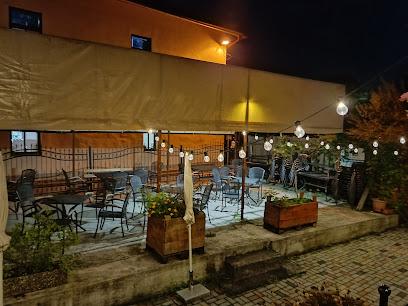
Penzión* Lykovec - Reštaurácia
Discover the flavors of Slovakia at Penzión Lykovec in Muráň, where traditional cuisine meets warm hospitality.
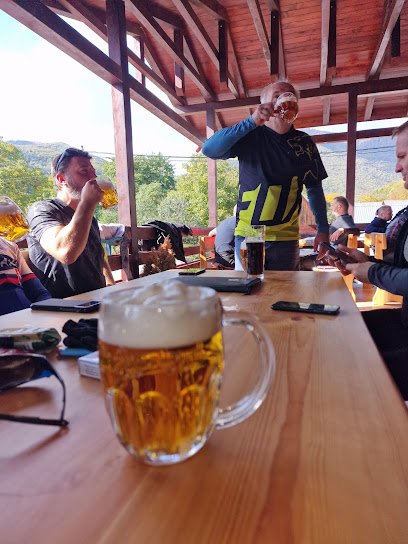
ŠPORT PUB
Discover the vibrant atmosphere of ŠPORT PUB in Brezno-Mazorníkovo, offering delicious drinks and a lively social experience for all visitors.

Praženica pub
Experience the vibrant atmosphere and local flavors at Praženica Pub, a charming bar in the heart of Brezno, Slovakia.

BAR ZLATÁ NYMFA
Discover the lively nightlife and welcoming atmosphere at Bar Zlatá Nymfa, a must-visit spot for tourists in Brezno.

Club Peklo
Experience the vibrant flavors of Slovakian cuisine at Club Peklo, a must-visit gastropub in the heart of Polomka.

Pub - Kráľová Taverna
Discover the warmth of Slovak culture at Kráľová Taverna, a cozy pub in Brezno known for its friendly atmosphere and local flavors.

Legendárne buchty - ZBOJSKÁ
Delight in the traditional flavors of Slovakia at Legendárne buchty, a charming bakery and pub in Tisovec known for its sweet pastries and local brews.

Pohostinstvo Jonas
Experience the essence of Slovak culture at Pohostinstvo Jonas, a cozy pub in Heľpa offering local brews and traditional cuisine.
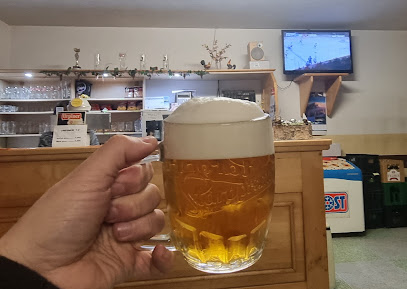
Valhalla Pub
Valhalla Pub in Revúca: Experience local charm and affordable drinks in a cozy atmosphere, perfect for unwinding after a day of exploration.
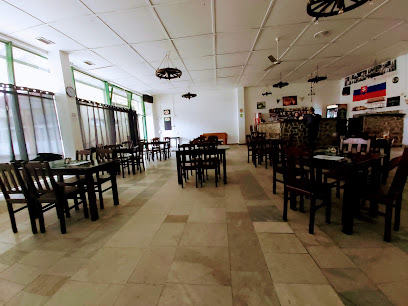
Hradová
Discover the charm of Tisovec at Hradová Pub, where traditional Slovak culture meets delicious food and drink in a cozy atmosphere.

Pohostinstvo Pod hruškou
Discover the charm of Slovak hospitality at Pohostinstvo Pod hruškou, a cozy bar in Braväcovo offering local drinks and a warm atmosphere.
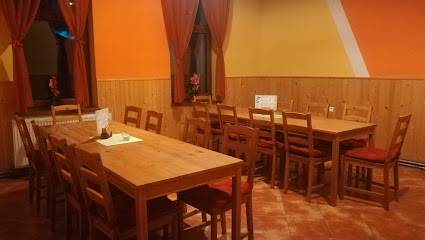
Krčma pri Mlňe
Discover the authenticity of Slovakian cuisine and hospitality at Krčma pri Mlňe, a must-visit pub in the heart of Pohorelá.

Pohostinstvo u Šmajtaka
Discover the charm of Slovak culture at Pohostinstvo u Šmajtaka, a cozy pub in Heľpa serving traditional dishes and local drinks.
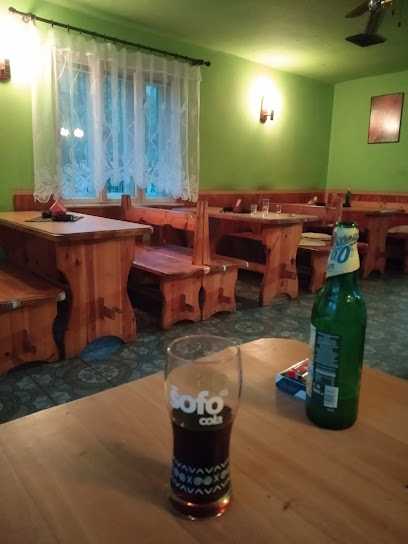
Local Phrases about Muranska Planina National Park
-
- HelloAhoj
[ahoy] - GoodbyeDovidenia
[doh-vee-de-nya] - YesÁno
[ah-no] - NoNie
[nye] - Please/You're welcomeProsím
[pro-seem] - Thank youĎakujem
[dyah-koo-yem] - Excuse me/SorryOspravedlňujem sa
[os-pra-ve-dl-nyu-yem sa] - How are you?Ako sa máš?
[ah-ko sa mash] - Fine. And you?Dobré. A ty?
[doh-bray. ah tee] - Do you speak English?Hovoríte po anglicky?
[ho-vo-ree-te po an-gleet-skee] - I don't understandNerozumiem
[ne-ro-zoo-myem]
- HelloAhoj
-
- I'd like to see the menu, pleaseChcel by som vidieť jedálny lístok, prosím
[kh-tsel bee som vee-dyety yed-al-nee lees-tok pro-seem] - I don't eat meatNejem mäso
[nye-yem mah-so] - Cheers!Na zdravie!
[na zdra-vee-ye] - I would like to pay, pleaseChcel by som zaplatiť, prosím
[kh-tsel bee som zap-la-teet pro-seem]
- I'd like to see the menu, pleaseChcel by som vidieť jedálny lístok, prosím
-
- Help!Pomoc!
[po-mots] - Go away!Choď preč!
[khoy prech] - Call the Police!Volaj políciu!
[vo-lay po-lee-tsyoo] - Call a doctor!Volajte lekára!
[vo-lay-te le-ka-ra] - I'm lostStratil som sa
[stra-teel som sa] - I'm illSom chorý
[som kho-ree]
- Help!Pomoc!
-
- I'd like to buy...Chcel by som kúpiť...
[kh-tsel bee som koo-peet] - I'm just lookingLen sa pozerám
[len sa po-ze-ram] - How much is it?Koľko to stojí?
[kol-ko to stoy-ee] - That's too expensiveTo je príliš drahé
[to ye pree-leesh dra-he] - Can you lower the price?Môžete znížiť cenu?
[moh-zhe-te znee-zheet tse-nu]
- I'd like to buy...Chcel by som kúpiť...
-
- What time is it?Koľko je hodín?
[kol-ko ye ho-deen] - It's one o'clockJe jedna hodina
[ye yed-na ho-dee-na] - Half past (10)Polovica desiatej
[po-lo-vee-tsa de-sya-tey] - MorningRáno
[ra-no] - AfternoonPopoludní
[po-po-loo-dnee] - EveningVečer
[ve-cher] - YesterdayVčera
[vche-ra] - TodayDnes
[dnes] - TomorrowZajtra
[zai-tra] - 1Jedna
[yed-na] - 2Dve
[dve] - 3Tri
[tree] - 4Štyri
[shty-ree] - 5Päť
[paht] - 6Šesť
[shest] - 7Sedem
[se-dem] - 8Osem
[o-sem] - 9Deväť
[de-vat] - 10Desať
[des-at]
- What time is it?Koľko je hodín?
-
- Where's a/the...?Kde je...?
[kde ye] - What's the address?Aká je adresa?
[ah-ka ye a-dre-sa] - Can you show me (on the map)?Môžete mi to ukázať (na mape)?
[moh-zhe-te mee to oo-kah-zat na ma-pe] - When's the next (bus)?Kedy je ďalší (autobus)?
[ke-dy ye dyal-shee autobus] - A ticket (to ....)Jedno lístok (do ....)
[yed-no lees-tok do]
- Where's a/the...?Kde je...?
History of Muranska Planina National Park
-
Archaeological evidence suggests that the area of Muranska Planina National Park has been inhabited since the Neolithic era. Early settlers were drawn to the region's abundant natural resources, including fresh water, game, and fertile land. Various artifacts, such as tools and pottery, have been discovered, providing insights into the lives of these ancient communities.
-
During the medieval period, Muranska Planina became strategically important due to its rugged terrain and elevated position. The construction of Muráň Castle in the 13th century served as a defensive stronghold against invasions and as a symbol of feudal power. The castle's ruins still stand today, offering a glimpse into the region's medieval past and its architectural ingenuity.
-
The 15th and 16th centuries marked a golden age of mining in the Muranska Planina region. Rich deposits of iron ore and precious metals attracted miners and merchants, leading to the establishment of mining settlements. This period significantly boosted the local economy and led to advancements in mining technology and infrastructure.
-
In the late 16th and early 17th centuries, the region faced numerous challenges from Turkish invasions. The local population had to fortify their towns and castles, including Muráň Castle, to protect themselves from raids. This era was marked by frequent conflicts and a significant impact on the daily lives of the inhabitants.
-
Following the defeat of the Ottoman Empire, the Habsburgs took control of the region. Under Habsburg rule, the area saw increased administrative organization and development of infrastructure. The influence of the Austro-Hungarian Empire is evident in the architectural styles and cultural practices that emerged during this period.
-
In the 19th century, Muranska Planina played a role in the Slovak National Revival, a cultural and political movement aimed at promoting Slovak identity and independence. The picturesque landscapes and historical sites of the region inspired many Slovak poets, writers, and thinkers who contributed to the national awakening.
-
During World War II, Muranska Planina was a significant center of anti-fascist resistance. The dense forests and remote terrain provided ideal conditions for partisan activities. Several important resistance operations were conducted in the area, contributing to the broader struggle against fascist forces in Slovakia.
-
In 1997, recognizing the region's unique natural and historical value, Slovakia established Muranska Planina National Park. The park aims to protect the diverse ecosystems, rare species, and historical landmarks that make this area a national treasure. Today, it serves as a destination for ecotourism, education, and cultural preservation.
Muranska Planina National Park Essentials
-
Muranska Planina National Park is located in the central part of Slovakia. The nearest major city is Banská Bystrica, which is approximately 70 kilometers away. The closest international airport is Poprad-Tatry Airport, about 90 kilometers from the park. From there, you can rent a car or take a bus to reach the park. There are also train services to the nearby towns of Tisovec or Revúca, from where local transportation can be used to access the park.
-
Within Muranska Planina National Park, the best way to get around is by car or on foot. The park has numerous hiking trails and some areas that are only accessible by walking. Local buses connect the nearby towns to the park's entrance, but service can be infrequent. Renting a car offers the most flexibility for exploring the area. Bicycles can also be a good option for getting around, and some trails are bike-friendly.
-
The official currency in Slovakia is the Euro (EUR). Credit and debit cards are widely accepted in most hotels, restaurants, and shops, but it is advisable to carry some cash, especially when visiting remote areas or small establishments. ATMs can be found in the nearby towns of Tisovec and Revúca.
-
Muranska Planina National Park is generally safe for tourists. However, standard precautions should always be taken. Avoid leaving valuables in your car or unattended. There are no specific high-crime areas targeting tourists, but it is always best to stay vigilant, particularly in more isolated areas. Wildlife encounters are possible, so it is important to stay on marked trails and follow park guidelines.
-
In case of an emergency, dial 112, which is the general emergency number in Slovakia. The nearest medical facilities are located in Tisovec and Revúca. It is recommended to have travel insurance that covers medical emergencies and evacuation. Carry a basic first aid kit when hiking, and familiarize yourself with the nearest emergency shelters and contact points within the park.
-
Fashion: Do wear appropriate outdoor clothing and sturdy hiking boots when exploring the park. Layered clothing is advisable due to variable weather conditions. Religion: Do respect local customs and traditions. Slovaks are generally tolerant, but modest dress is appreciated in religious or historical sites. Public Transport: Do respect other passengers and keep noise levels low. Don’t eat or drink on public transport. Greetings: Do greet people with a friendly 'Dobrý deň' (Good day). A firm handshake is a common greeting. Eating & Drinking: Do try local delicacies and traditional Slovak dishes. Don’t refuse hospitality, as it is considered impolite.
-
To experience Muranska Planina National Park like a local, visit during the off-peak seasons for a more tranquil experience. Engage with local guides who can provide in-depth knowledge of the park’s flora and fauna. Explore the traditional wooden architecture in the nearby villages and taste local cheeses and smoked meats. Don't miss the Muráň Castle ruins for panoramic views of the surrounding landscape. For a unique experience, participate in local cultural events or festivals if your visit coincides with them.
Trending Landmarks in Muranska Planina National Park
-
Slovak Paradise National Park
-
Rekreačný areál Predná hora
-
Castle Muran
-
Sysľovisko.sk
-
Náučný chodník Stratenský kaňon
-
Náučný chodník Muránsky hrad
-
Prameň Hrona
-
Muranska planina syslia lúka
-
Banský náučný chodník v Kvetnici
-
Čertova dolina
-
Veľká Lúka
-
Chata Zámok pod Muránskym hradom
-
Huta Etelka
-
Parkovisko - Sysľovisko Muránska planina
-
Správa NP Muránska planina, Informačné stredisko
Nearby Cities to Muranska Planina National Park
-
Things To Do in Zakopane
-
Things To Do in Banská Bystrica
-
Things To Do in Salgotarjan
-
Things To Do in Martin
-
Things To Do in Košice
-
Things To Do in Prešov
-
Things To Do in Miskolc
-
Things To Do in Eger
-
Things To Do in Žilina
-
Things To Do in Vac
-
Things To Do in Bielsko-Biala
-
Things To Do in Krakow
-
Things To Do in Trenčín
-
Things To Do in Tarnow
-
Things To Do in Nyiregyhaza








